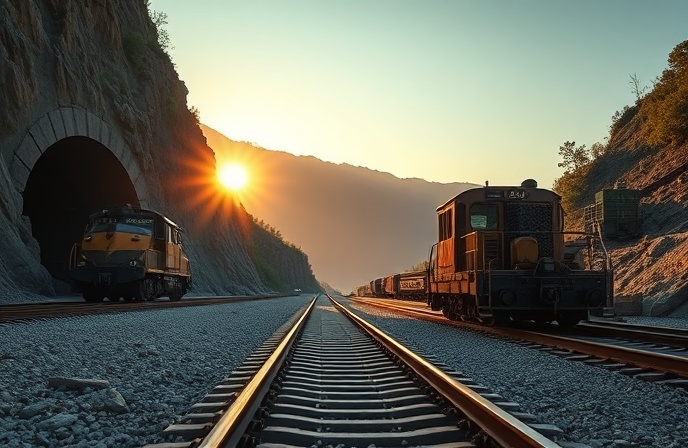Eastern Europe Rail: TEN-T, Infrastructure, & UIRR’s Vision
At Railway Days 2025, UIRR discussed the future of **intermodal freight**, highlighting TEN-T regulation, infrastructure, and military mobility. Key improvements needed for **railway** operations.

“`html
Introduction
Speaking at the Railway Days 2025 conference in Bucharest, Ákos Érsek, Chief Policy Advisor at the International Union for Road-Rail Combined Transport (UIRR), discussed the future of intermodal freight, focusing on the revised TEN-T Regulation, infrastructure capacity reforms, and military mobility requirements.
TEN-T Regulation and Performance Benchmarks
Érsek emphasized that the European Green Deal’s objectives, including competitiveness, resilience, and sustainability, rely heavily on the ability of rail and intermodal operators to work within a coherent framework. He noted that combined transport is a key method for decarbonizing logistics, reducing oil dependency, and boosting industrial resilience through modal shift.
According to Érsek, the new TEN-T Regulation sets ambitious performance benchmarks for freight operations. These include the expectation that 75% of border-crossing freight trains should be on time within a 30-minute window, and 90% should complete technical and administrative border processes within 25 minutes. These targets will require better coordination between national programs and rail users, along with the merging of existing freight corridors into wider European Transport Corridors.
Eastern European Infrastructure Needs
For Eastern Europe, Érsek highlighted the urgent need to eliminate speed restrictions, enable 740-metre-long trains, increase axle loads to 22.5 tonnes, electrify key corridors, and upgrade cross-border infrastructure. This includes the reconstruction of the Timișoara–Belgrade line for freight operations.
Terminal Capacity and Infrastructure Capacity Regulation
The UIRR representative also drew attention to the European Commission’s upcoming terminal capacity study, due by mid-2027, which will inform a wider action plan by 2028. He urged policymakers to ensure sufficient land is reserved for terminal development near railway lines and stressed the importance of improving road and rail last-mile connections.
Addressing the forthcoming Infrastructure Capacity Regulation, Érsek pointed to the need for transparent capacity allocation and compensation for excessive bypass routes. He proposed penalties for last-minute path changes and the freezing of allocated paths for six to twelve months to ensure reliability.
Military Mobility Strategy and Funding
Érsek noted that intermodal transport offers the most adaptable framework for integrating freight into Europe’s military mobility strategy. He proposed designating key intermodal terminals along the four main military mobility corridors and funding their last-mile upgrades.
UIRR also advocates expanding dual-use infrastructure funding to cover transshipment equipment and extending EU resilience directives to include intermodal operators.
Conclusion
Érsek reaffirmed that the effectiveness of Europe’s combined transport policy will depend on the consistent alignment between regulation, infrastructure investment, and market needs, particularly in the fast-growing economies of Eastern Europe.
Company Summary
International Union for Road-Rail Combined Transport (UIRR): The UIRR is an organization focused on the promotion and development of combined transport in Europe.
“`




